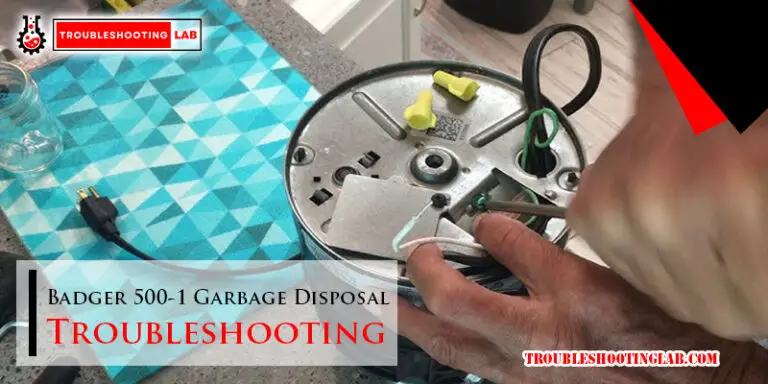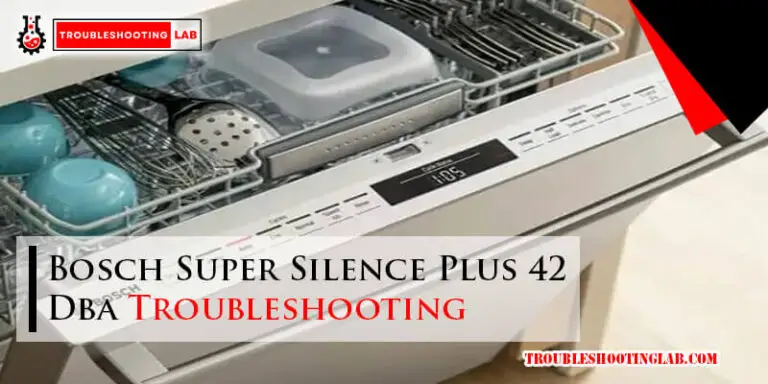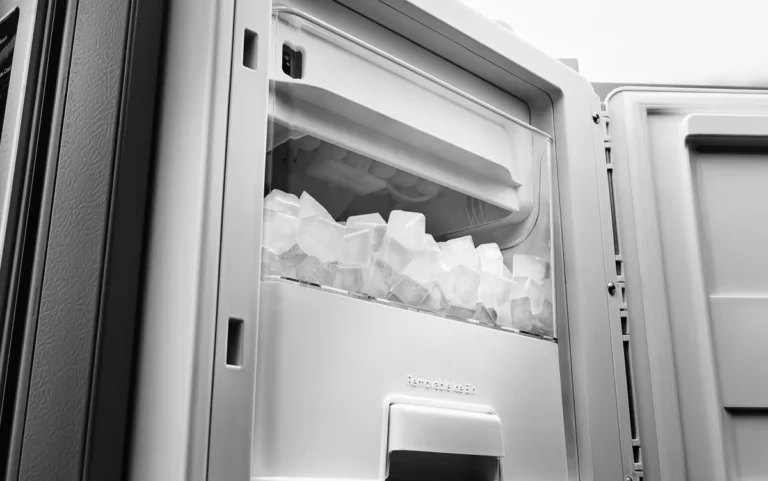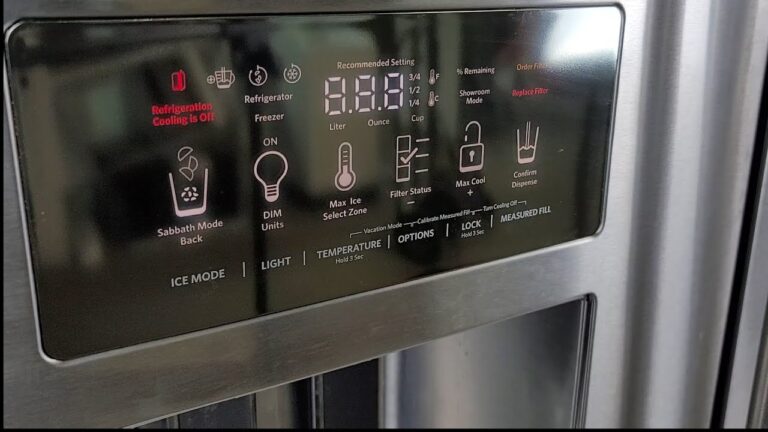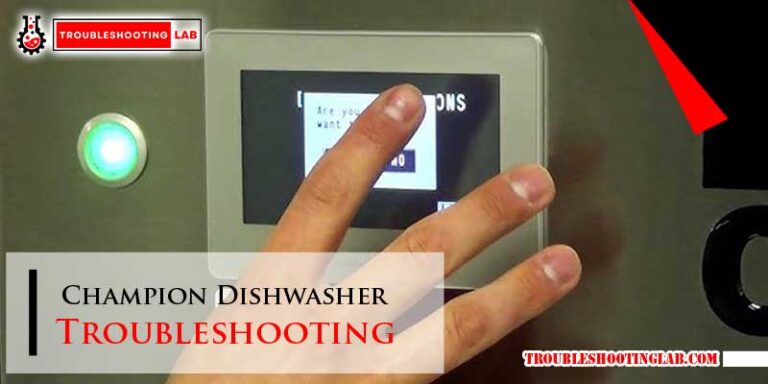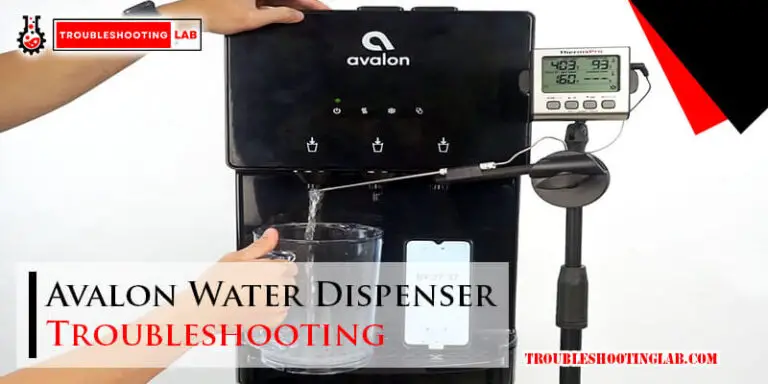Kenmore Side by Side Ice Maker Troubleshooting: Expert Tips
Is your Kenmore side-by-side ice maker giving you trouble? It can be frustrating when you count on a steady supply of ice, only to find your machine isn’t cooperating.
But don’t worry—you’re not alone, and the good news is most issues can be fixed without calling a professional. In this guide, you’ll discover simple, step-by-step troubleshooting tips to get your ice maker back up and running. Whether it’s not making ice, producing strange noises, or freezing over, we’ll help you pinpoint the problem and solve it.
Stick around—you’ll thank yourself later when your ice maker is working like new again.
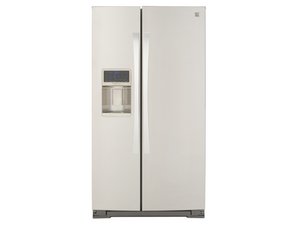
Credit: www.ifixit.com
Common Ice Maker Issues
Kenmore side-by-side ice makers are convenient, but they can encounter issues. Understanding common problems helps in identifying and fixing them quickly. Regular maintenance and troubleshooting can also extend the ice maker’s lifespan. Let’s explore some frequent ice maker problems and their possible solutions.
Ice Maker Not Producing Ice
An ice maker that stops producing ice can be frustrating. Check if the water supply is connected and not blocked. A clogged water filter can also reduce water flow. Replace the filter if it’s old or dirty. Ensure the ice maker is turned on and the freezer temperature is set correctly. A temperature above 10°F might prevent ice production. Inspect the ejector arm to ensure it’s not stuck or jammed.
Ice Maker Produces Small Or Misshapen Ice
Small or odd-shaped ice cubes may indicate a water supply issue. Verify that the water pressure meets the ice maker’s requirements. Low water pressure can cause incomplete ice cubes. Inspect the water inlet valve for clogs or damage. A dirty mold tray could also lead to misshapen ice. Clean the tray using warm water and a soft cloth. Avoid using chemicals that could contaminate the ice.
Leaking Water Around The Ice Maker
Water leaks around the ice maker can signal a faulty connection. Inspect the water line for cracks or loose fittings. Tighten connections or replace damaged hoses as needed. A clogged or frozen defrost drain may also cause water to pool. Thaw the drain with warm water to restore proper drainage. Check the ice maker’s level to ensure it isn’t tilted, which could lead to overflow.
Ice Maker Making Unusual Noises
Unusual noises from the ice maker can be alarming. Grinding sounds often indicate a jammed motor or ice buildup. Remove any stuck ice to allow the motor to operate freely. Clicking noises may result from the water valve opening and closing. If the noise is persistent, inspect the valve for damage. Humming sounds are usually normal but could mean the ice maker is running without water. Ensure the water supply is properly connected.

Credit: www.cinchhomeservices.com
Quick Fixes For Basic Problems
Kenmore side-by-side ice makers can encounter issues over time. Many of these problems are minor and can be resolved quickly. You don’t need to be an expert to fix them. Here are practical steps to get your ice maker working again.
Checking The Power Connection
The ice maker might not work if it lacks power. Start by inspecting the power cord. Make sure it’s securely plugged into the outlet. Check the outlet itself for any issues. Use a different device to test if the outlet is functional. If the outlet works, ensure the ice maker’s switch is set to “On”.
Adjusting The Water Supply
Water flow is essential for making ice. Look at the water supply line connected to the ice maker. Confirm the valve is open and water is flowing. If the line is bent or kinked, straighten it to restore flow. If water still isn’t reaching the unit, check for blockages in the line.
Resetting The Ice Maker
Resetting can fix minor glitches. Locate the reset button on your ice maker. Press and hold it for a few seconds. Some models may need the power turned off and back on to reset. Refer to your Kenmore manual for specific instructions.
Cleaning The Ice Maker Components
Dirt or buildup can block normal operation. Remove the ice bin and any detachable parts. Wash them with warm water and mild soap. Use a soft brush to clean hard-to-reach areas. Avoid using harsh chemicals that might damage the components. Let all parts dry completely before reassembling.
Inspecting Key Components
When your Kenmore side-by-side ice maker stops working, frustration sets in. Understanding the key components can help identify the issue. By inspecting crucial parts, you can pinpoint what needs fixing. This process ensures your ice maker functions smoothly again.
Below are essential components to check while troubleshooting your ice maker. Follow these steps to diagnose the problem effectively.
Examining The Water Inlet Valve
The water inlet valve is critical for ice production. It controls the water flow into the ice maker. Locate the valve at the back of your refrigerator. Check for visible damage or clogs in the valve. Ensure the valve is securely connected to the water supply. A malfunctioning valve may restrict water flow, stopping ice production. Replace it if it’s defective or clogged.
Inspecting The Ice Maker Mold
The ice maker mold is where water freezes into ice cubes. Examine the mold for cracks, leaks, or residue buildup. Hardened mineral deposits can block the freezing process. Clean the mold thoroughly to remove dirt or debris. If the mold is cracked or damaged, replace it to restore functionality.
Testing The Ice Maker Motor
The motor powers the ice maker’s moving parts. A faulty motor can halt ice cube production. Listen for unusual noises when the motor runs. Use a multimeter to test the motor’s electrical continuity. Replace the motor if it’s burned out or shows no continuity. A functional motor ensures smooth ice-making operations.
Checking The Ice Dispenser Mechanism
The dispenser mechanism delivers ice to your glass. Inspect it for blockages or broken parts. Ensure the dispenser flap opens and closes properly. Clear any ice jams or debris blocking the chute. Replace damaged components to restore normal dispensing. A clean mechanism ensures ice flows freely.
Advanced Troubleshooting Steps
Is your Kenmore side-by-side ice maker acting up despite trying the basic fixes? It might be time to dive into some advanced troubleshooting steps. These methods require a bit more effort, but they can save you from unnecessary repairs or replacements. Let’s break down the steps to help you pinpoint and resolve specific issues with your ice maker.
Diagnosing Temperature Control Issues
Temperature plays a crucial role in ice production. If your freezer is too warm, the ice maker won’t work efficiently. Start by checking the freezer temperature—it should ideally be set between 0°F and 5°F.
Use a thermometer to confirm the actual temperature inside the freezer. If it’s off, adjust the thermostat and give it a few hours to stabilize. Still having problems? Check for frost buildup on the evaporator coils, as that can affect cooling performance.
Testing The Water Pressure
Low water pressure can disrupt the ice-making process. To test this, disconnect the water supply line and place a bucket under it. Turn the water on and observe the flow—steady and strong pressure is key.
If the water flow seems weak, inspect the line for kinks or blockages. Also, confirm that your home’s water pressure is at least 20 psi (pounds per square inch). If all else fails, consider replacing the water inlet valve.
Replacing A Faulty Ice Maker Module
Sometimes, the issue lies within the ice maker module itself. If your ice maker isn’t cycling or producing ice, the module might be damaged. You can test this by manually rotating the ejector arm—if it doesn’t move or the motor doesn’t engage, replacement is likely needed.
To replace the module, unplug the refrigerator and remove the ice maker assembly. Install the new module, ensuring all connections are secure, and reinstall the ice maker. Before you plug everything back in, double-check that the module matches your Kenmore model.
Addressing Electrical Problems
Electrical issues can also cause your ice maker to malfunction. Start by inspecting the wiring harness for any visible damage or loose connections. A multimeter can help you test the continuity of the wires.
If the wiring is intact, check the ice maker’s internal components for electrical faults. For example, a blown thermal fuse or a defective motor could be the culprit. Always turn off the power before working on any electrical parts to ensure your safety.
Which of these steps feels most relevant to your ice maker problem? Don’t hesitate to take it one step at a time. Troubleshooting can feel overwhelming, but a systematic approach can lead you to the solution faster than you think!
Preventive Maintenance Tips
Preventive maintenance is the secret weapon to keep your Kenmore side-by-side ice maker running smoothly. Regular care can save you time, money, and the frustration of dealing with a malfunctioning unit. Here are simple, actionable tips to ensure your ice maker stays in top-notch condition.
Cleaning The Ice Maker Regularly
Dust and debris can sneak into your ice maker, leading to clogs and strange-tasting ice. Regular cleaning prevents buildup and improves performance. Use a soft cloth and mild detergent to wipe down the exterior and interior components.
Don’t forget to clean the ice bin—leftover particles can contaminate fresh ice. Make it a habit to clean every couple of months. If you’ve ever had cloudy ice, this might be the solution you’ve been looking for.
Maintaining Proper Freezer Temperature
Temperature matters more than you think. Your freezer should stay between 0°F and 5°F for optimal ice production. A colder setting can freeze up the water line, while a warmer one might slow down ice creation.
Use a thermometer to check your freezer’s temperature. If the ice cubes are too small or oddly shaped, your temperature setting might need adjusting. You’ll be surprised how much this simple tweak can improve performance.
Avoiding Overloading The Ice Bin
It’s tempting to pile up ice cubes for a party or a hot summer day, but overloading the bin can damage your ice maker. Heavy weight can stress the motor and lead to mechanical issues. Stick to a manageable amount of ice to avoid problems.
Think of your ice maker like a car—you wouldn’t overload it with excessive weight, so why do it to your appliance? Check the bin often and remove excess ice to keep things flowing smoothly.
Replacing Worn-out Components
Parts like water filters, motors, or valves wear out over time. Ignoring these can lead to bigger issues down the line. Inspect your ice maker periodically for signs of wear and tear.
If your ice maker stops working, replacing a worn-out component might be the quickest fix. Check your user manual for compatible parts. A small investment in replacement parts can keep your ice maker running like new.
What’s your maintenance routine for your ice maker? Try these tips and see the difference they make in your appliance’s lifespan!
When To Call A Professional
Knowing when to call a professional for your Kenmore side-by-side ice maker can save time and money. Some issues are easy to fix yourself, but others need expert attention. Understanding the signs of complex problems helps prevent further damage. Below are key situations when professional assistance is crucial.
Signs Of Complex Mechanical Failures
Strange noises coming from the ice maker often signal mechanical issues. Grinding or clicking sounds might mean parts are misaligned or damaged. If the ice maker stops dispensing ice entirely, it could point to a motor failure. These types of problems require specialized tools and expertise. Attempting to fix them yourself might worsen the damage.
Persistent Water Leakage Issues
Water pooling under or around the ice maker is a red flag. This could mean a clogged drain line or a faulty water inlet valve. Persistent leaks can cause internal damage or even lead to mold growth. If the leak continues after basic cleaning or troubleshooting, it’s time to call a professional. They can diagnose and fix the root cause effectively.
Electrical Malfunctions Beyond Diy Repair
Electrical issues are dangerous and should not be ignored. If the ice maker trips your circuit breaker, there might be a wiring problem. Flickering lights or an unresponsive control panel may signal electrical faults. DIY attempts with electrical components can lead to safety risks. A trained technician ensures the repair is done safely and correctly.

Credit: www.youtube.com
Conclusion
Troubleshooting your Kenmore side-by-side ice maker doesn’t have to be stressful. Start by identifying the issue and follow the simple steps outlined. Regular maintenance can prevent many common problems. Clean the ice maker and check for clogged water lines often.
If parts seem faulty, consider replacing them for better performance. Always consult the user manual for guidance. For complex issues, contacting a professional is a smart choice. With patience and care, you can keep your ice maker working smoothly. A well-functioning ice maker ensures a steady supply of ice whenever you need it.

